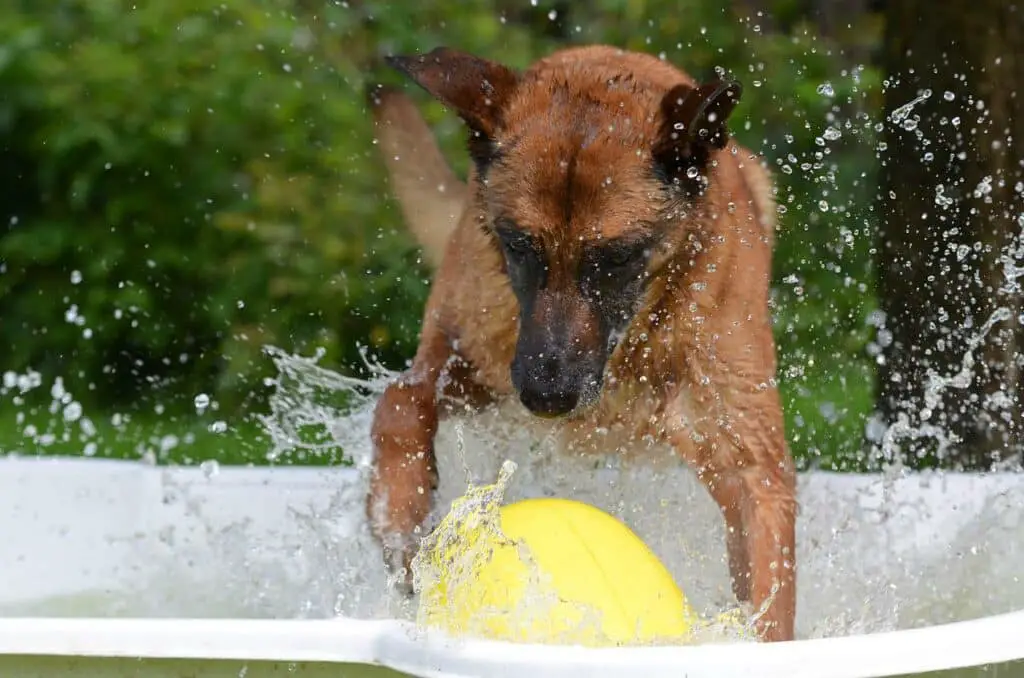Dandelions are accessible to dogs since they grow in lawns, yards, and ditches.
They’re healthy for them since they contain a whole food source of minerals and vitamins.
That explains why they’re in most dogs’ natural food recipes.
However, can dandelions give dogs diarrhea?
Yes, dandelions can give dogs diarrhea.
They contain natural laxatives, which cause diarrhea in dogs if they consume them in excess.
If a dog with diarrhea consumes dandelions, the condition will worsen.
Many times, conditions that dogs suffer from stem from things they eat.
This article provides answers to why dandelions cause diarrhea in dogs and measures you can take to contain the condition.

Why do dandelions cause diarrhea in dogs?
You may notice that your dog starts to have abdominal discomfort like diarrhea after consuming dandelions.
The condition is a result of the following reasons:
The plant contains weed killers
Most weed killers contain glyphosate, a poisonous chemical to dogs.
If a dog consumes dandelions containing high concentrations of glyphosate, it will experience diarrhea as one of the symptoms of toxicity.
Excessive consumption
Dandelion plants are a natural laxative and contain high-fiber content.
When a dog consumes dandelions in excess, it will experience diarrhea.
When using dandelions as a liver tonic for your dog, start with a small portion and increase the amount over time to prevent laxative effects.
Allergic reactions
Allergic reactions in dogs exhibit diarrhea, itchiness, and redness symptoms.
If a dog is allergic to dandelion stalks, it will show diarrhea, and excessive consumption worsens it.

Which parts of dandelions are beneficial to dogs?
Dandelions have several uses in a dog’s body.
However, some parts of the plant are more nutrient-dense than others.
These are:
Blooms: Dogs can consume a dandelion’s yellow flowers and seed puffs.
These blooms contain antioxidants and polyphenols, which eliminate free radicals and boost immunity in dogs.
Roots: The roots of a dandelion plant act as a natural tonic that improves the functionality of a dog’s liver.
They have anti-inflammatory properties, and you can use the root extract to speed up muscle recovery and enhance joint soreness in dogs.
Leaves: Dandelion leaves contain more nutrients than the other parts of the plant.
You can add them to a dog’s meal to supplement their diet.
Can you feed dandelion supplements to dogs instead of the plant?
Dandelion supplements are safer for your dog to reap health benefits than through the plant.
They are beneficial, mainly if you feed your dog alongside a balanced diet.
You should feed your dog dandelion supplements regularly to ensure that it reaps the vast health benefits.
Besides providing your dog with protein and minerals, the supplement is an excellent source of Vitamins A, C, and K.
To give your dog the supplement, mix it into its food or feed it directly.
It will improve your dog’s liver health, improve digestion, and maintain blood sugar levels.
What should you do if your dog gets diarrhea from consuming dandelions?
When your dog gets diarrhea after eating dandelions in excess, the condition may resolve itself after a short while, but sometimes it may take longer.
However, it’s essential to take measures to manage the situation.
These include:
Plenty of water
Diarrhea causes dehydration since digs lose plenty of water through their stool.
As a result, you need to feed your dog plenty of water to replace the lost water.
Dehydration in dogs leads to kidney failure, and in extreme cases, it causes death.
24-hour fasting
Withholding food from your dog for about 24 hours helps speed up its recovery from diarrhea.
However, you shouldn’t limit its water intake.
This fasting doesn’t apply to puppies, old dogs, and those with other illnesses.
Frequent, bland meals
You should feed your dog small portions of bland meals after the 24-hour fast.
This helps prepare the gut to process food again.
Some of the foods you can try are plain white rice and boneless chicken breast without skin.
Once the dog starts passing solid stool, it’s time to feed it its regular food.
Veterinarian help
Most cases of diarrhea in dogs disappear within two days.
If the condition exceeds two days, you should seek medical attention from a veterinarian.
Your dog will undergo diagnostic tests and receive intravenous fluid therapy.
How do you serve dandelions to dogs to avoid diarrhea?
You can feed your dog dandelions in leaf, flower, or root form.
Since excessive consumption causes diarrhea, it’s necessary to feed your dog the required amount based on its weight and size as follows:
For fresh leaves, add them to your dog’s food. While smaller dogs can handle a few leaves, bigger ones require more. Alternatively, you can blend the leaves with water, then add them to your dog’s food.
Dry the leaves, flowers, and roots, crash and mix them to form a powder. Sprinkle the herb over a dog’s food and mix. The recommended amount for this herb is one tablespoon for every 20 pounds of a dog’s weight. Consider picking the flowers during early Spring because they tend to turn bitter after the season.
Make tea using the dandelion’s dry leaves, flowers, or roots. To prepare this tea, infuse 5g-30g of the herb in 8 ounces of water for about 10-15 minutes. Give 3 cups to every 20-pounds of a dog’s weight three times every day. Since dandelion is a diuretic, give your dog plenty of opportunities to pee.
Conclusion
As a dog owner, you should always monitor what your dog consumes.
If your dog loves devouring plants, it needs extra care to avoid consuming those containing harmful chemicals like pesticides.
Although dandelions are safe for dog consumption, you need to be on the lookout so that it doesn’t consume excessive amounts, which can cause diarrhea.
Since dandelions have numerous health benefits, you may decide to feed them to your dog actively.
Before incorporating it into a dog’s diet, consult a veterinarian for guidance on how to serve the plant to your furry friend according to its weight and size.
- What Dog Breeds Have Pink Skin? - March 24, 2023
- What Are the Most Inspiring Dog Breeding Quotes? - March 20, 2023
- Can Pheromone Spray Help Improve Dog Breeding Results? - March 19, 2023








